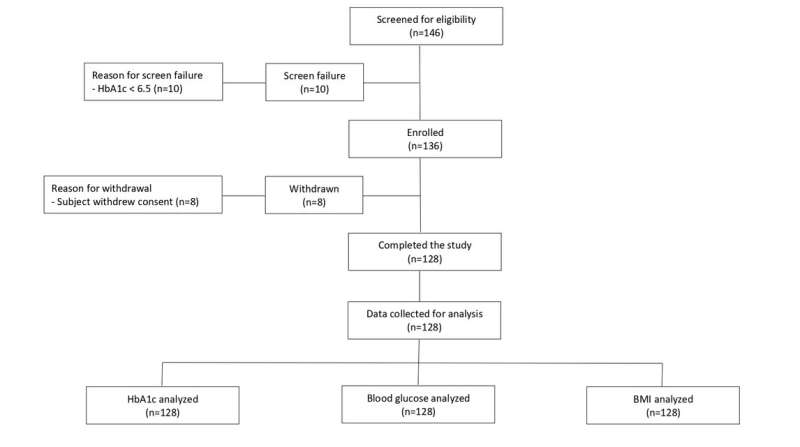This article has been reviewed according to Science X's editorial process and policies. Editors have highlighted the following attributes while ensuring the content's credibility:
fact-checked
proofread
Examining the clinical utility of a digital therapeutic intervention with type 2 diabetes

A recent study in JMIR Diabetes reported that patients with type 2 diabetes mellitus (T2DM) that have elevated levels of blood glucose and glycated hemoglobin are at higher risk of macro- and microvascular complications.
The aim of this study was to examine the clinical utility of a digital therapeutic intervention (DTI) as an add-on therapy to achieve glycemic control in patients with T2DM. This was a 12-week prospective, single-arm digital intervention study in patients with T2DM receiving regular antidiabetic treatment.
The outcome measures of the study were mean changes in HbA1c, fasting blood glucose (FBG), postprandial blood glucose (PPBG), BMI, and Homeostatic Model Assessment for Insulin Resistance index at the end of 12 weeks. At the end of 12 weeks, the mean change in HbA1c, FBG, PPBG, and BMI for the overall study population was –0.84%
Dr. Suhas Patil from Terrals Technologies Private Ltd said, "Type 2 diabetes mellitus (T2DM) is a metabolic endocrine disorder that is characterized by continually elevated blood glucose levels."
As a chronic progressive disease, the medical management of T2DM often necessitates the intensification of medications during the course of treatment. However, there is also compelling evidence to support the role of therapeutic lifestyle changes such as weight loss, dietary restrictions, exercise, adequate sleep, and health coaching in the effective management of diabetes without requiring the intensification of the medications.
In recent years, digital technologies have attracted increasing attention for enabling lifestyle modifications for patients and helping them achieve the goal of diabetes self-management to reduce the disease burden. As a mostly remote intervention form, DTIs may not be as impactful as in-person counseling and follow-ups, but they have the advantage of ease of communication, anytime-anywhere accessibility, and availability of information.
Several studies have demonstrated the role of digital technology, such as digital therapeutic platforms, telehomecare systems, digitally enhanced diabetes self-management, education and support programs, as well as smartphone-based integrated online real-time diabetes care systems, for the effective management of T2DM without requiring escalation of existing medication.
The research team concluded, "The use of a DTI as an adjunct therapy to conventional medications significantly reduced HbA1c, FBG, and PPBG levels in patients with T2DM. This in turn may reduce the risk of cardiovascular complications as well as all-cause mortality associated with T2DM."
More information: Rajeev Chawla et al, Clinical Utility of a Digital Therapeutic Intervention in Indian Patients With Type 2 Diabetes Mellitus: 12-Week Prospective Single-Arm Intervention Study, JMIR Diabetes (2022). DOI: 10.2196/41401




















